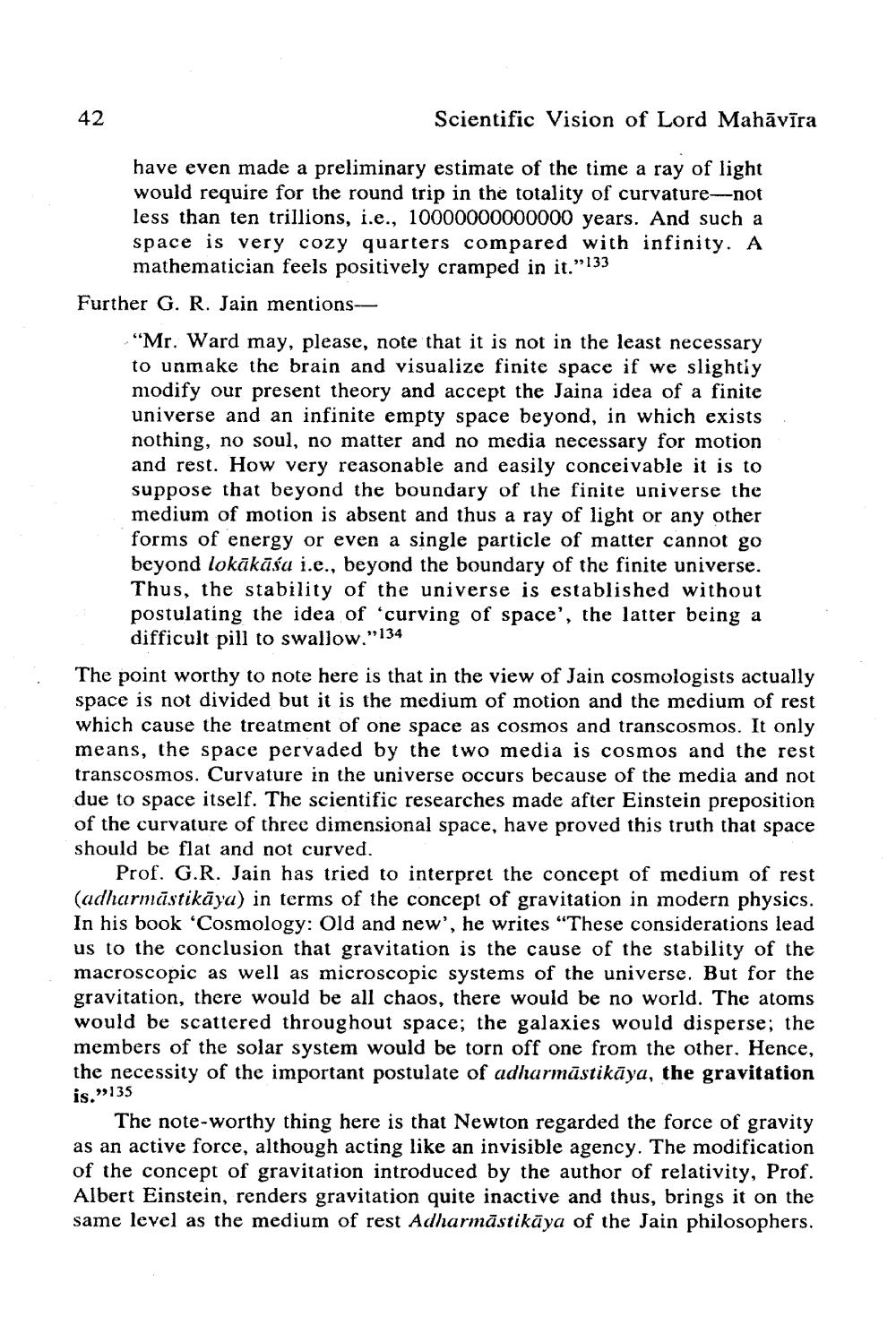________________
42
Scientific Vision of Lord Mahāvīra
have even made a preliminary estimate of the time a ray of light would require for the round trip in the totality of curvature-not less than ten trillions, i.e., 10000000000000 years. And such a space is very cozy quarters compared with infinity. A mathematician feels positively cramped in it."133
Further G. R. Jain mentions
"Mr. Ward may, please, note that it is not in the least necessary to unmake the brain and visualize finite space if we slightly modify our present theory and accept the Jaina idea of a finite universe and an infinite empty space beyond, in which exists nothing, no soul, no matter and no media necessary for motion and rest. How very reasonable and easily conceivable it is to suppose that beyond the boundary of the finite universe the medium of motion is absent and thus a ray of light or any other forms of energy or even a single particle of matter cannot go beyond lokākāśa i.e., beyond the boundary of the finite universe. Thus, the stability of the universe is established without postulating the idea of 'curving of space', the latter being a difficult pill to swallow."134
The point worthy to note here is that in the view of Jain cosmologists actually space is not divided but it is the medium of motion and the medium of rest which cause the treatment of one space as cosmos and transcosmos. It only means, the space pervaded by the two media is cosmos and the rest transcosmos. Curvature in the universe occurs because of the media and not due to space itself. The scientific researches made after Einstein preposition of the curvature of three dimensional space, have proved this truth that space should be flat and not curved.
Prof. G.R. Jain has tried to interpret the concept of medium of rest (adharmastikāya) in terms of the concept of gravitation in modern physics. In his book 'Cosmology: Old and new', he writes "These considerations lead us to the conclusion that gravitation is the cause of the stability of the macroscopic as well as microscopic systems of the universe. But for the gravitation, there would be all chaos, there would be no world. The atoms would be scattered throughout space; the galaxies would disperse; the members of the solar system would be torn off one from the other. Hence, the necessity of the important postulate of adharmāstikāya, the gravitation is."135
The note-worthy thing here is that Newton regarded the force of gravity as an active force, although acting like an invisible agency. The modification of the concept of gravitation introduced by the author of relativity, Prof. Albert Einstein, renders gravitation quite inactive and thus, brings it on the same level as the medium of rest Adharmastikaya of the Jain philosophers.




